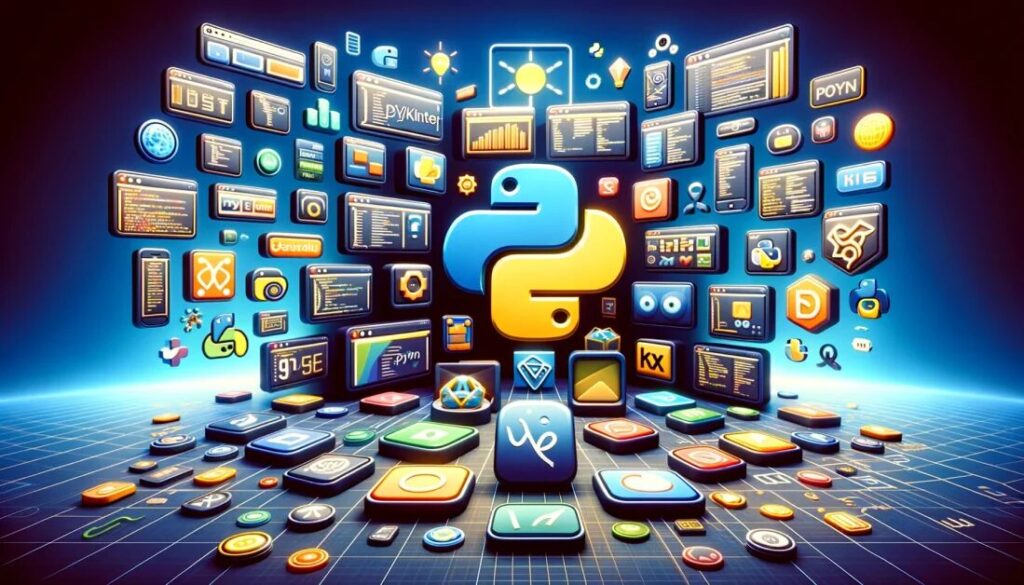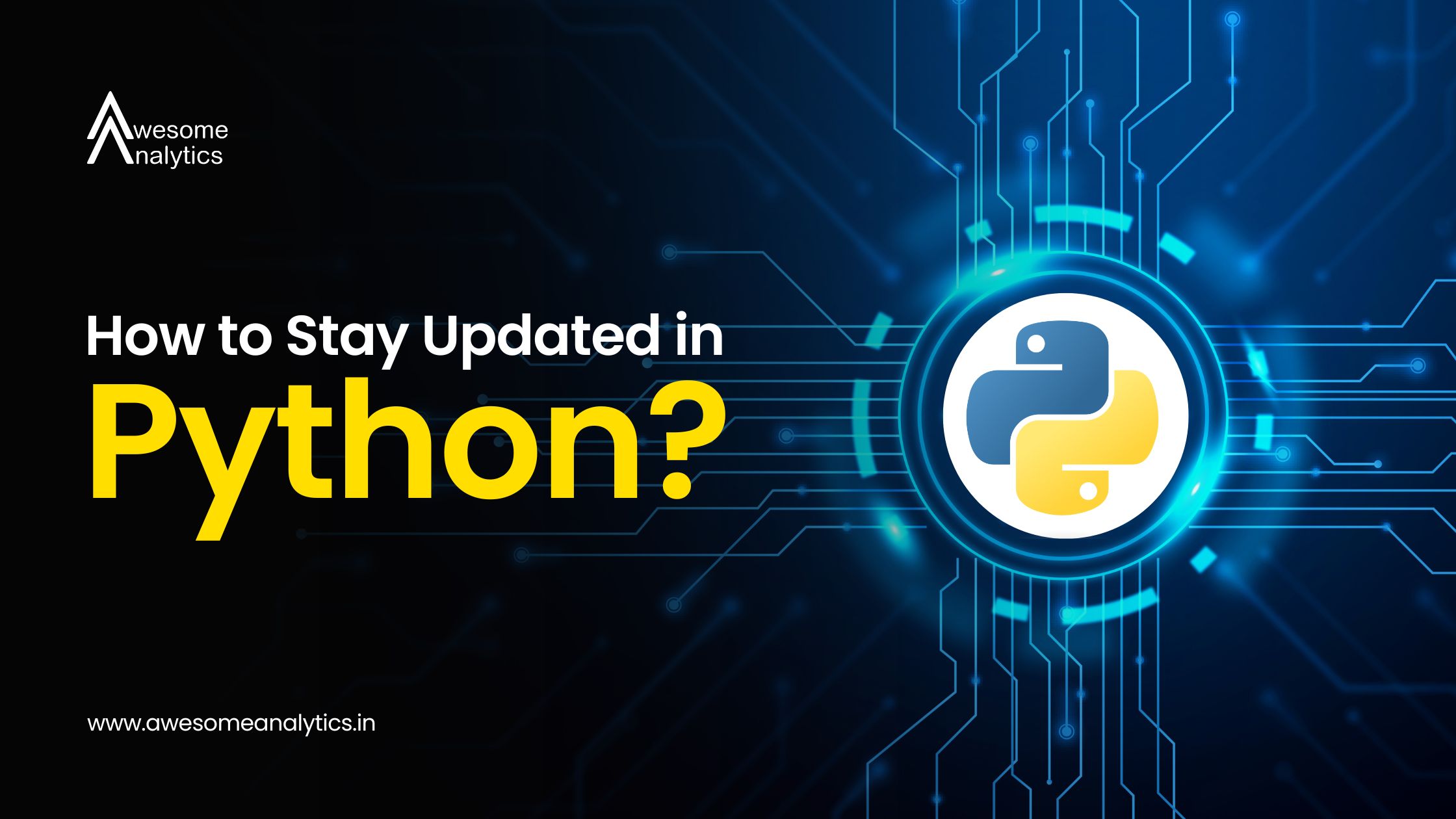This guide offers valuable tips and resources to help you keep up-to-date with Python’s ever-changing landscape. Whether you're a seasoned developer or just starting with Python, staying informed about new features, libraries, and best practices will enhance your proficiency and productivity in this dynamic language.
Why Stay Current?
Staying current in Python grants access to new features, enhances security, stability, and ensures career relevance in the competitive job market.
Staying up-to-date in Python is essential for several reasons:
- Access to New Features: New versions of Python often come with exciting features and improvements that can enhance your coding experience.
- Security and Stability: Keeping your Python environment updated ensures that you have the latest security patches and bug fixes, improving the stability of your applications.
- Career Relevance: Employers value candidates who stay current with emerging technologies, making you more competitive in the job market.

1. Understanding Python's Evolution
Python, a high-level programming language created by Guido van Rossum, emphasizes simplicity and readability. It's evolved significantly since the late 1980s, becoming widely used in various fields like data analysis and machine learning.
- Origins: Python was created in the late 1980s by Guido van Rossum, designed to be easy to read and write.
- Early Usage: Initially used for scripting and automation tasks, Python's simplicity led to its popularity in scientific computing and data analysis.
- Key Milestones: Python 2.0 (2000) introduced features like list comprehensions. Python 3.0 (2008) brought major improvements despite some backward-incompatible changes.
- Current Status: Python 2.x ceased development in 2020 and is no longer supported. Python 3.x continues to evolve rapidly, introducing features like type hints and async/await syntax.
2. Version Management
Managing different Python versions for various projects can be challenging. To stay up-to-date and switch versions easily, use tools like pyenv, Virtualenv, Anaconda, Docker, Poetry, or asdf to handle different Python versions and dependencies. Here are some tools that can help:
- pyenv: Easily switch between multiple Python versions by creating separate environments for each.
- conda: Manage Python versions and packages efficiently, particularly useful for data science projects.
3. Exploring Python Enhancement Proposals (PEPs)
Python Enhancement Proposals (PEPs) serve as the main method for proposing new features, gathering community feedback, and documenting Python's design decisions, making them invaluable for staying updated on language developments.
- PEP 8: Follow the style guide for clean and consistent Python code.
- PEP 20: Embrace the Zen of Python for ideal design and usage.
- PEP 484: Understand type hints for better code readability.
- PEP 572: Familiarize yourself with assignment expressions, including the "walrus operator".


4. Popular Python Libraries
Staying current with popular Python libraries, such as NumPy, Pandas, Matplotlib, Scikit-Learn, and TensorFlow, helps you write more efficient and effective code for data analysis, visualization, and machine learning.
- NumPy: Perform numerical computing with arrays and matrices.
- Pandas: Manipulate large datasets using DataFrames and Series.
- Matplotlib: Create various types of visualizations in Python.
- Scikit-learn: Utilize efficient tools for data mining and analysis.
- TensorFlow: Dive into machine learning and deep learning tasks.
- Flask: Build lightweight web applications easily.
5. Online Resources
There are many online resources available to help you stay current with Python. Some of these resources include:
- Python.org: Access news, updates, and documentation directly from the official Python website.
- Python Weekly: Stay informed with the latest Python news through a free weekly newsletter.
- Real Python: Explore in-depth tutorials, articles, and videos on various Python topics.
- Talk Python To Me: Listen to podcasts covering diverse Python topics and interviews with experts. Networks, Recurrent Neural Networks)
6. Community Engagement
Engage with Python's active community through local meetups, conferences, and online forums like Reddit and Discord. Contribute to open-source projects for hands-on experience and networking opportunities.
- Local Meetups and Conferences: Attend events to network with other developers and learn about new projects and libraries.
- Online Forums and Discussion Groups: Engage with the Python community, ask questions, share ideas, and contribute to open-source projects.
- Contributing to Open Source: Gain hands-on experience and network with other developers by contributing to open-source projects.
7. Networking and Conferences
- PyCon US, EuroPython, PyCon India: Attend major Python conferences to learn, network, and experience the vibrant Python community firsthand.
- YouTube Channels: Many conferences release talks and tutorials on their channels after the events, allowing access to valuable content for those unable to attend in person
8. Best Practices and Coding Standards
To ensure clean Python code, adhere to PEP 8 standards for indentation, naming, and whitespace. Additional resources include Google's style guide, linting tools, and code formatters.
- PEP 8 and PEP 20: Follow recommended style and design principles for clean and readable Python code.
- Google Python Style Guide: Consider Google's internal style guide for additional insights.
- Code Analysis Tools: Utilize tools like Pylint and Flake8 to detect style issues and syntax errors early on.
- Code Formatting Tools: Use formatters like Black and YAPF to automatically format code according to PEP 8 standards.

9. Continuous Learning
Strengthen Python skills by building side projects, reading books like "Fluent Python," participating in coding challenges, contributing to open source, and staying engaged with the community.
- Work on Side Projects: Build your own projects to apply and reinforce Python skills.
- Read Python Books: Explore books like "Fluent Python", "Effective Python", and "Python Tricks" for deeper insights.
- Participate in Code Challenges: Solve coding challenges on platforms like LeetCode and HackerRank to keep your skills sharp.
- Contribute to Open Source: Gain experience and network by contributing to open-source Python projects.
- Stay Active in the Community: Engage with other developers through meetups, forums, and discussions to stay motivated and informed.
Conclusion
In conclusion, staying current in Python requires a multifaceted approach, from understanding its evolution and leveraging tools to engaging with the community and continuously learning. By following these strategies, you can navigate Python's ever-changing landscape with confidence and proficiency.



